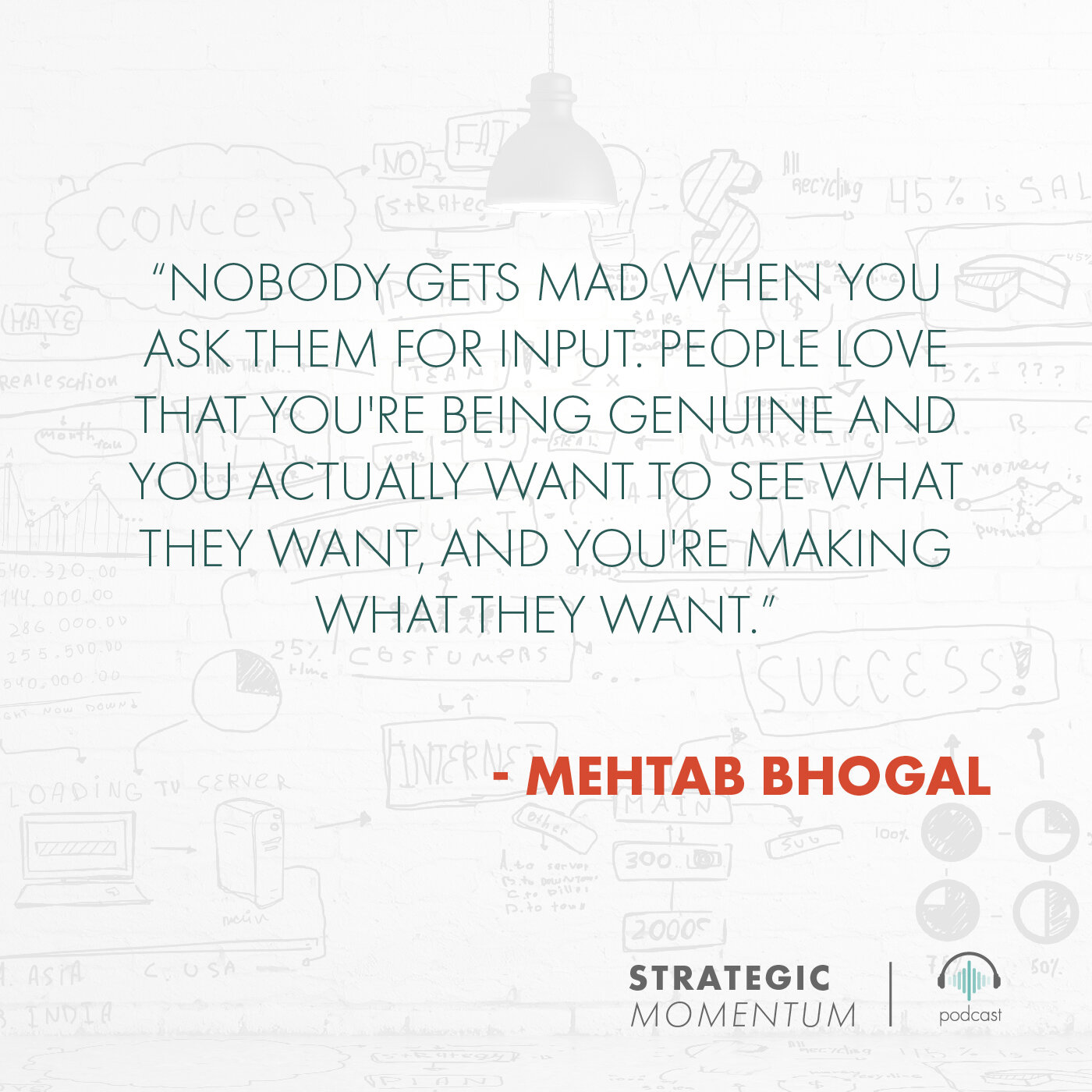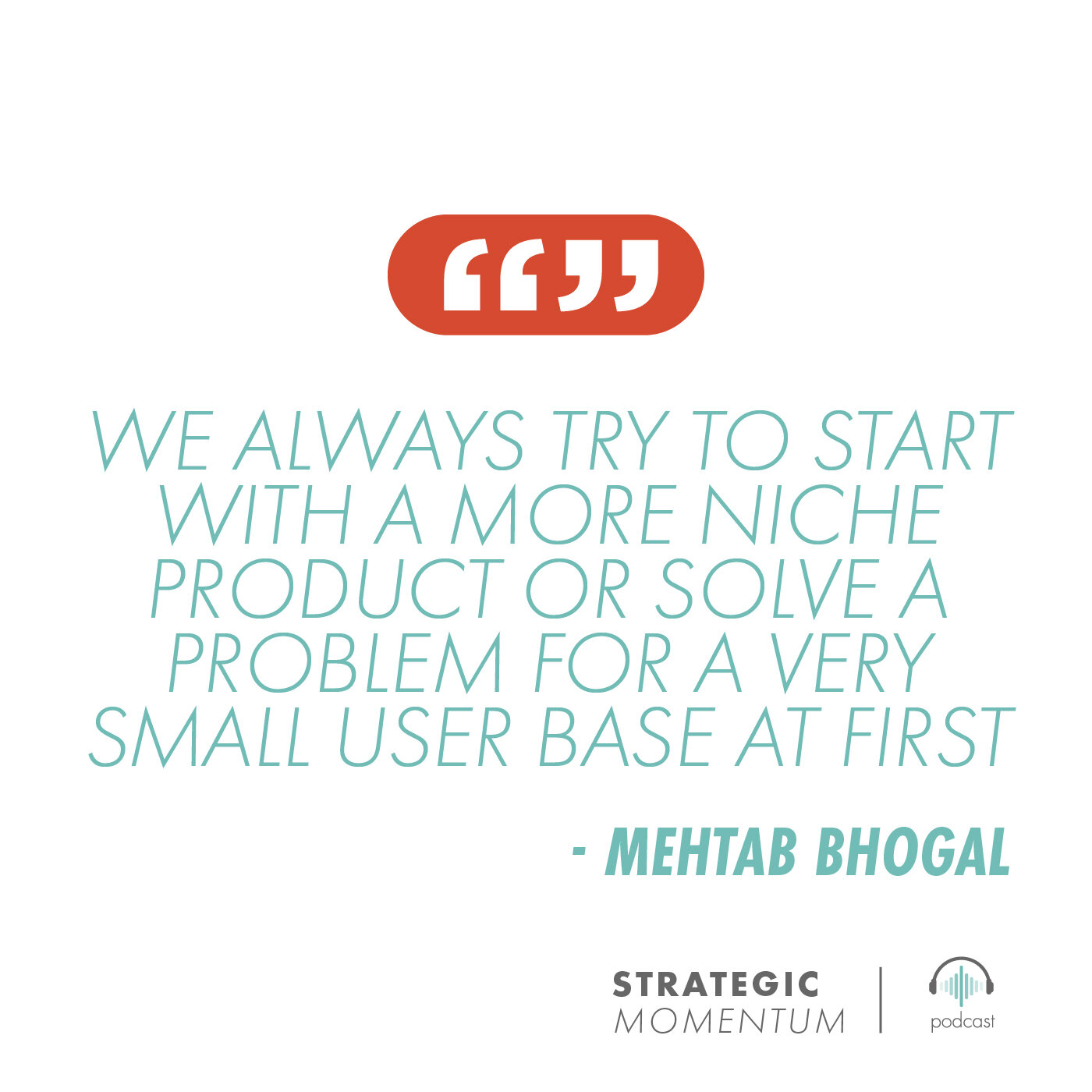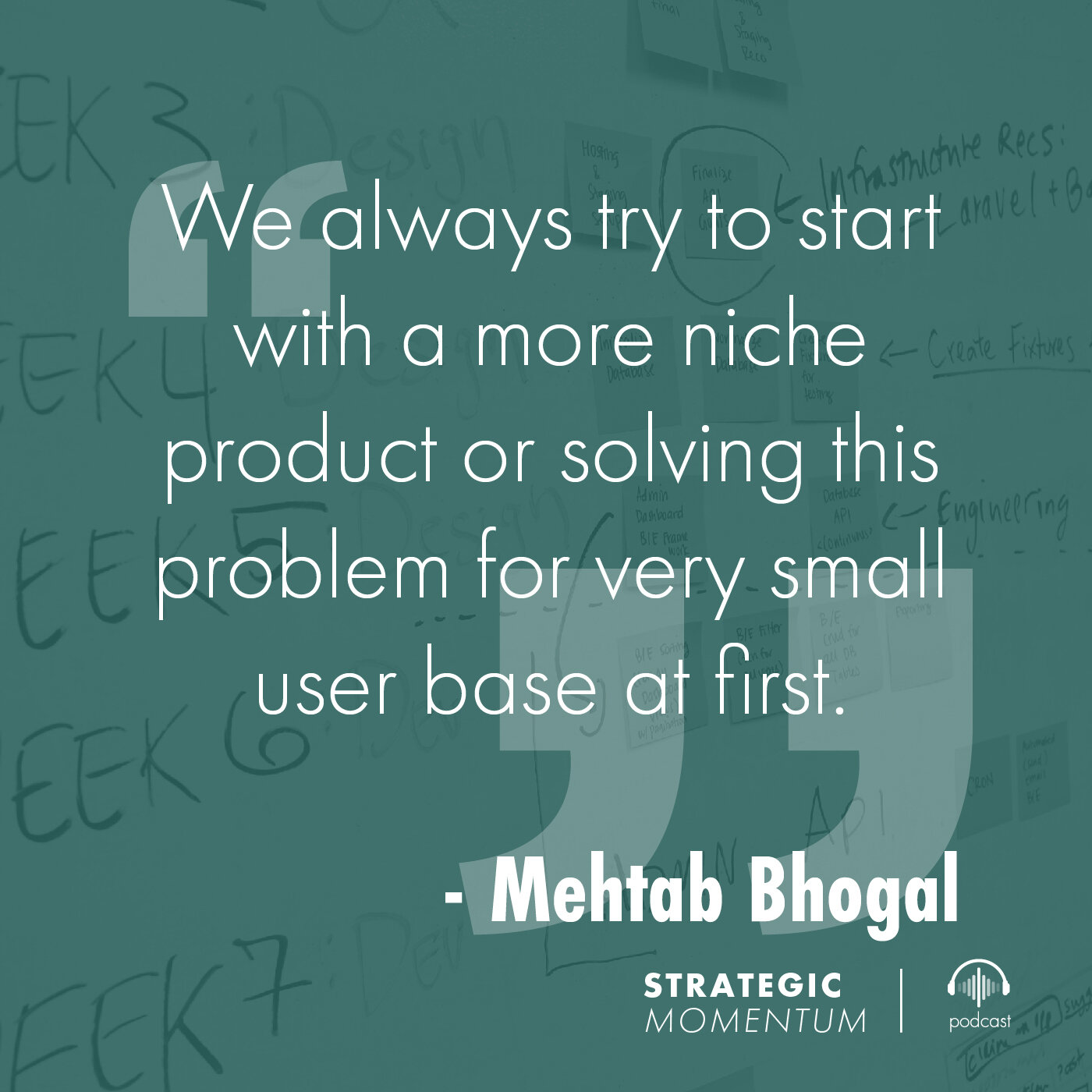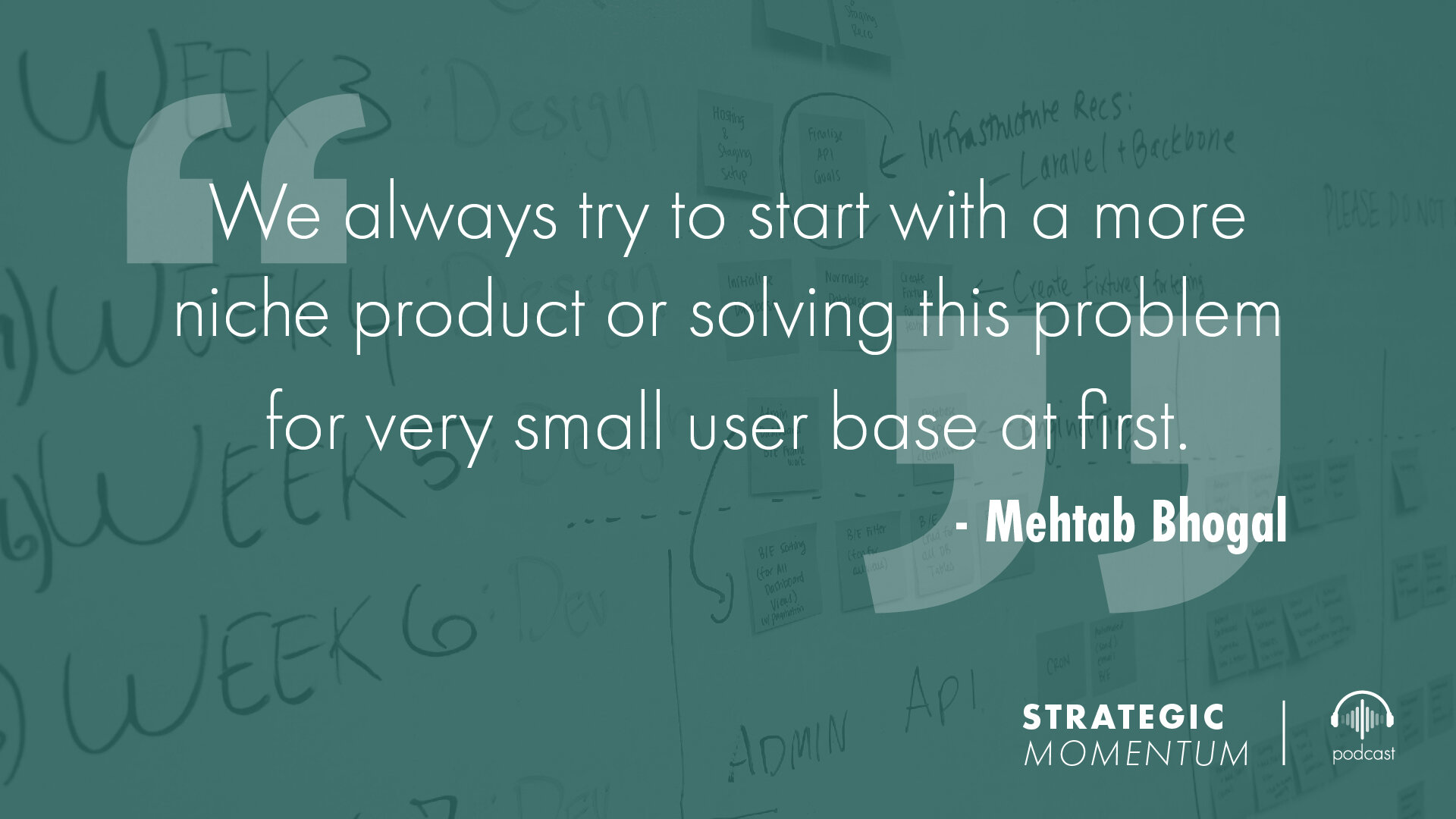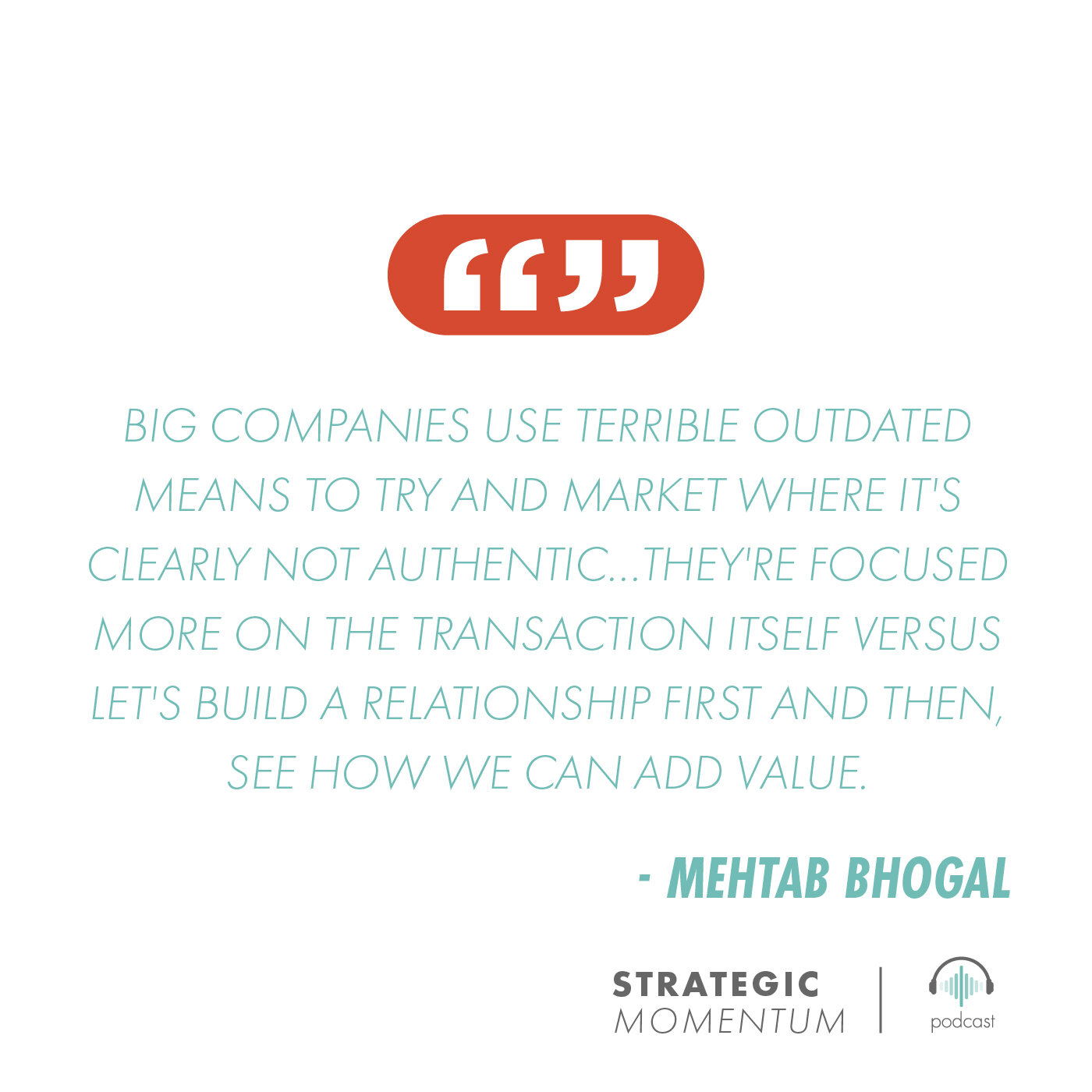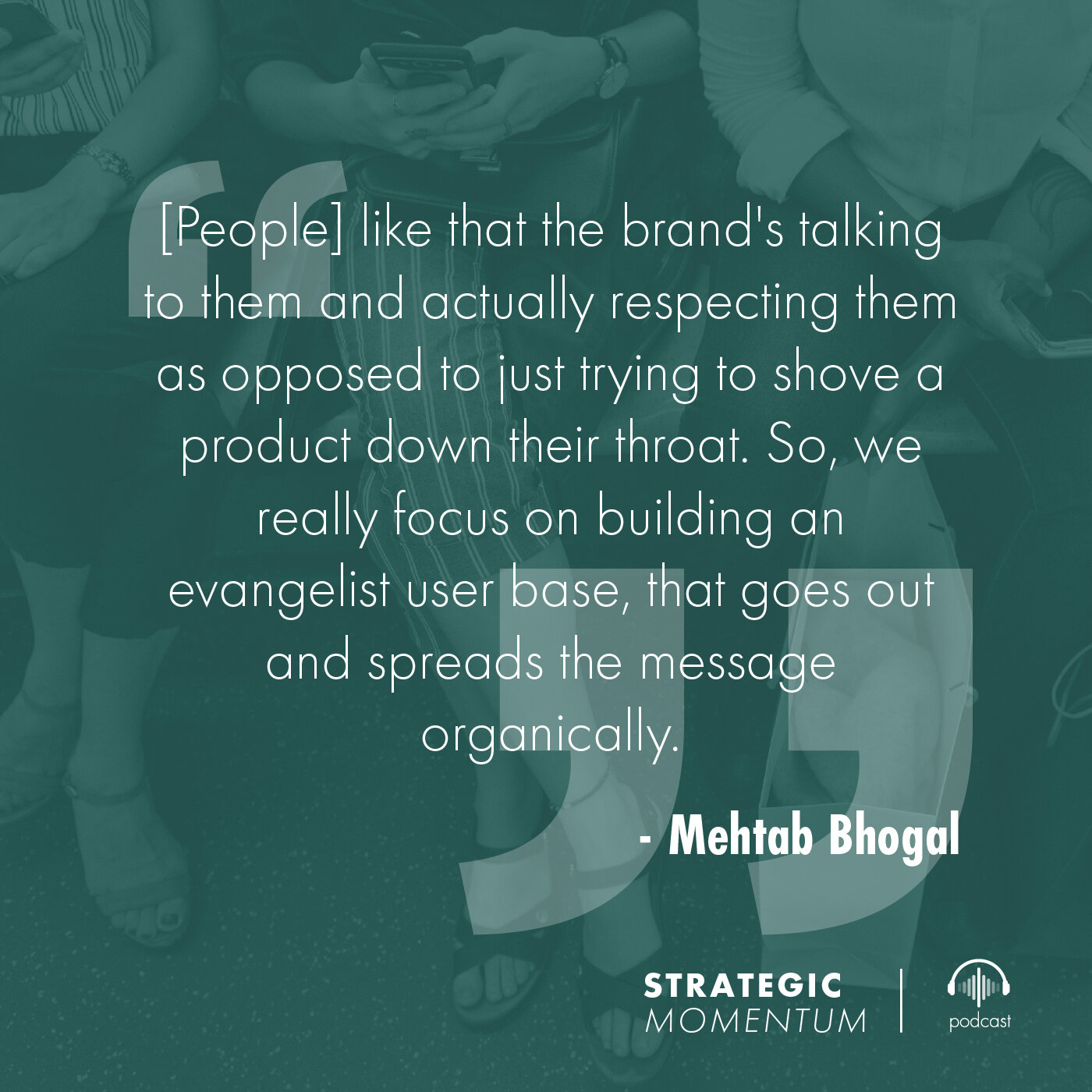Ep. 38 - The Millennial ‘Business’ Mindset (Pt. 2) - Driving Community Value by Delivering the Right Product for the Right People - with Mehtab Bhogal
Find Us Wherever You Listen To Podcasts
In the last episode, we talked to Mehtab Bhogal, a co-founder of the private equity firm Karta Ventures, about how he and his partners drive value for their businesses and the businesses they advise. If you haven’t already, you can listen to that episode here.
Today, Mehtab joins us again to share Karta Ventures’ approach to product development and marketing.
We dive into deep into what Mehtab and Karta Ventures believe is important to take into account when launching a new business. It’s the notion of starting very small and then testing and learning to hone in on your audience and create the products they want.
Bootstrapping Product Development: How to Create the Right Product for the Right People (While Mitigating Cost & Risk)
Mehtab and his partners have a simple but incredibly effective mantra when it comes to launching a new direct-to-consumer or eCommerce brand: start very small and get to know your target audience inside and out.
If you’re bootstrapping a new business, focus on a niche market. You likely can’t serve a large market better or create a product more cheaply than a large company with abundant financial and human capital.
However, those same bigger companies are often more focused on the transaction itself than building relationships with customers – and those relationships are a small company’s competitive advantage.
The easiest way to get that understanding of a community and establish a relationship with potential customers is simple – be an active part of that community (or work closely with someone who is).
Of course, you also need a product to sell to that audience, and Mehtab walked us through a product development process that should work with almost any budget:
Start with polling your niche audience. This can cost nothing. Based on your results, triage accordingly, and then go even deeper. Poll every possible dimension of the product or experience that may, potentially, have an impact on your target market’s level of interest.
It’s not intrusive. “Nobody gets mad when you ask them for input,” Mehtab says. “People love that you're being genuine and you actually want to see what they want, and you're making what they want.”
You also have the added benefit of the “IKEA Effect,” where people are more proud and rate products higher when they help build them.
However, it's important to recognize that the data is highly biased. To validate the direction you decide to go, you have to test it.
Facebook ads are one of Karta Ventures’ favorite ways to do that, if the product's appropriate for it. One of the biggest advantages of social media marketing is that it works with whatever budget you have, from as little as $5 a day all the way up to $500,000 a day. So it’s very scalable.
To hedge your bets further, use preorders to get a good idea of what the appetite really is for your product. Some people may like an idea in theory, but not enough to actually pay for it.
The Marketing Perspective: Influencers, Pull vs. Push, and Ensuring Demand
Mehtab believes that the biggest misconception around marketing today, especially when it comes to eCommerce, is the belief that push marketing is still effective.
“Push marketing, in general, is not going to be what it was. And it's, certainly, already sort of dying out ... A better way to market it is to build a really solid tailored value to that audience. And then, pull them in, make them want to click on it, make them want to follow you, and show them how they're going to benefit from it.”
Again, your advantage comes from adopting a relationship mentality over a transactional mentality.
Another mistake that many companies make is selling the wrong product to the wrong person. Among other consequences, this leads to negative reviews, and reviews are a critical part of launching a successful e-commerce brand.
However, you can find the right people for the right product by partnering with influencers that appeal to your target market, and they can help drive your initial marketing push.
Influencers create a human connection between the brand and audience, and you can leverage their community to figure out what people want, and very quickly. It’s best to establish these relationships and start your organic marketing push during the product development phase.
You don’t need a big marketing team to get your promotion started. Only after your organic referral base is set and cash flow coming in should you start building a marketing team to amplify that and assist with organic referrals. This way, you ensure that there's proper demand and build around demand – as opposed to generating demand by throwing people and money at the market.
Key Takeaways:
For anyone launching a new business with little to no capital, keep in mind that you’re at a disadvantage targeting a massive market right off the bat. A big player can come in and manufacture the product for less money than you can or serve that market better than you can because the market's big enough for it to be worth their time – so start with something niche.
Selling a niche product or service also allows you to focus on building an evangelist user base that will go out and spread the message organically. And the more niche you go, the higher price point you can really charge, which adds to your brand too.
It’s critical to come across as authentic to your target audience (essentially your community) in order to appeal to and sell to them. That means listening to them and learning their needs, first and foremost.
To become part of the fabric of the community is to be like them. If you can’t, find someone who represents them who can be your eyes and ears.
Your competitive advantage is adopting a relationship mentality, as opposed to a transactional mentality.
Poll every dimension of the product experience or anything that would have an impact on their interest to understand the optimal product.
The whole point is to hedge risk as much as possible. A pre-order model helps you gauge what the appetite really is for the product.
Organically marketing an ecommerce brand is not necessarily about investing in people – you're really investing in a process; doing small, iterative tests with minimal resources to constantly gauge where you are, what that level of interest is, and the level of potential.
If there’s enough interest, you can start considering how to invest in the physical resources, people resources, and operational resources to ensure that you can continue to build momentum and reach the goals that you want to reach.
Get good at systematizing and deploying micro tests to guide the direction of your business, and follow the data – but at the same time, learn to filter out any sort of emotional bias. “It can be really tempting to do one thing just because you love the idea of it, and that can work... but that's more luck than anything.”
Resources:
Learn more at http://kartaventures.com/
Connect with Mehtab on LinkedIn: https://www.linkedin.com/in/mehtab-bhogal/
Subscribe to the Strategic Momentum podcast:
On Spotify








